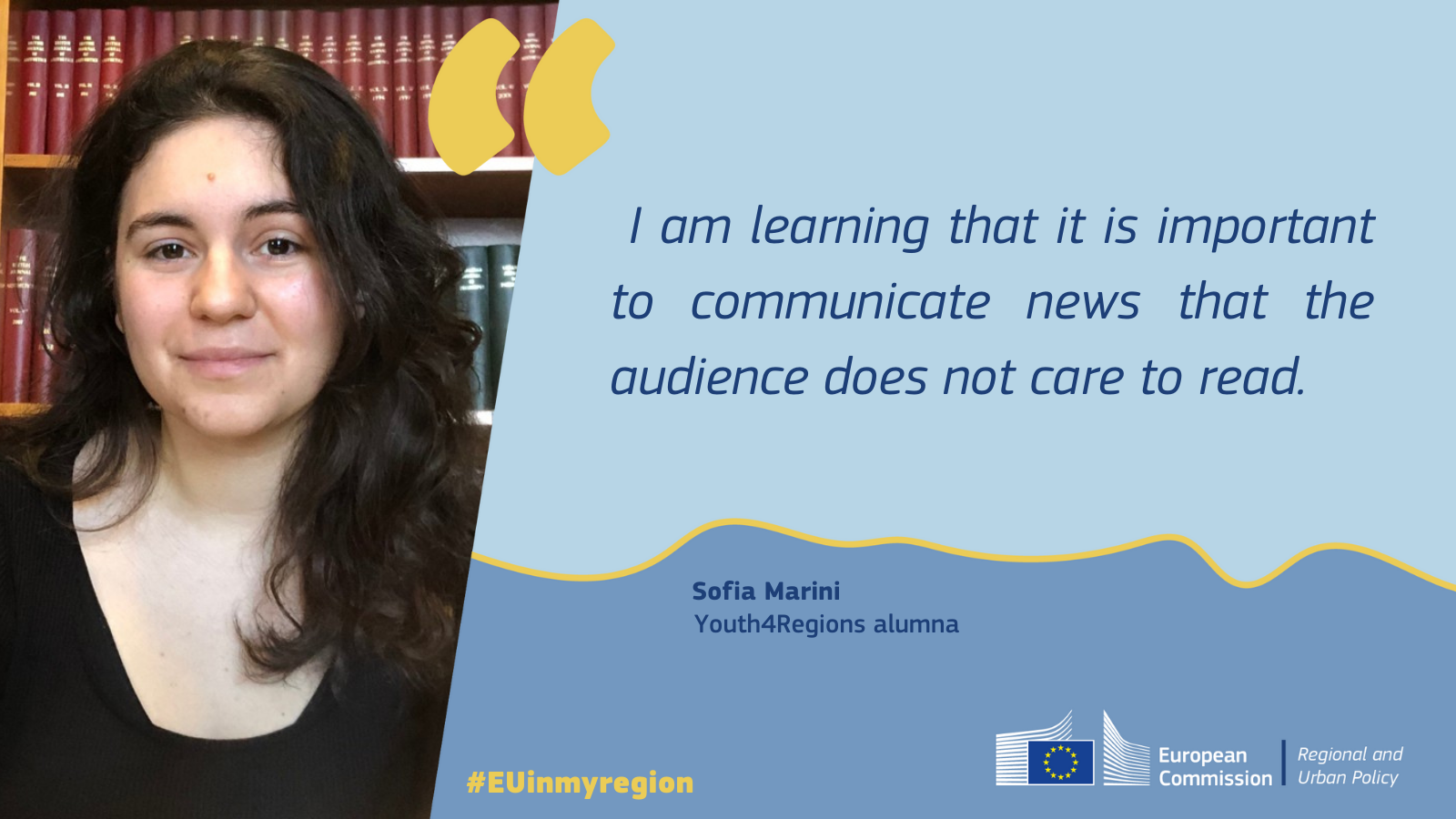
I am back from the European Week of Regions and Cities in Brussels. Reading the text on the screen, my mind goes to Serena, fellow participant in the Youth4Regions programme and trainee journalist at a press agency in Milan, Italy. Serena is in charge of posting financial announcements; she types with the frenzy of someone who quite literally breaks the news. During my time in Brussels, I learned that there are heterogeneous forms of journalism. Serena is a sprinter. By contrast, I am a marathon runner. I like to carve out space and time to sublimate thoughts.
The context of this article fits like a glove: I am asked to report on my experience at the regions week. It is impossible not to include my exchange with Serena in the evaluation. I reflect that interpersonal relationships are not measured by the abacus; they are not an account of costs and benefits, nor are they subject to the same optimisation principle as cohesion policy. So I set my perspective: in assessing my EU regions week, I will focus not on ‘how much’, but on ‘what’.
From the periphery to the centre
I live in Venice, a centralising city akin to Brussels: in the lagoon, the social law of six degrees of separation does not hold; it’s more like two. The world is drawn to Venice. As a result, connections feel within reach. I leave for Brussels to join the week of regions and cities strong in this belief, travelling the European continent from the periphery to the centre. However, upon arrival, my expectation is subverted: in Brussels, there is no separation at all. We aspiring journalists in the Youth4Regions programme are thrown into the melee, engulfed by institutional mechanisms, in the press room with other professional journalists.
It is Monday and I am at the European Commission, following the opening press conference of the European Week of Regions and Cities, chaired by Commissioner Elisa Ferreira and Committee of the Regions President Vasco Cordeiro. I wonder if the event is an exception, an extra-ordinary expression of European ceremonialism. Florin Rugina, project manager of Youth4Regions, which is part of the week’s media programme, dispels my doubt: ‘The European Union is one of two institutions in the world that hold press conferences daily. The other one is the White House.’ So, business as usual.
My first press conference invites a reflection on the responsibility of journalism. Reporting implies a perspective, a perimeter within which the news is framed. Even if there is such a thing as a universal truth, and not everything can be reduced to a dimension of subjectivity, how do we reconcile the reporting of facts with the filtering of one’s own individual perspective? Debate ensues. I am in the lobby of the Hilton Hotel with fellow Youth4Regions journalists for a training session. We are discussing ethics in journalism. Our work, which embodies praxis, is no stranger to the application of moral criteria. The debate is heated. We conclude that it is good to be objective always, neutral never.
The two rules of journalism
Euractiv colleagues seemingly agree. How to make cohesion policy palatable to those who read us without mystifying events? It depends on your audience. Euractiv operates within the so-called Brussels bubble. During our visit to their offices on Wednesday morning it immediately becomes clear to me what this means. Euractiv writes about European policies for people involved in European policies. After all, those who experience the institution in a totalising way need an outer perspective.
By contrast, Politico, whose headquarters we explore on Thursday, positions itself at the intersection of political and policy news. First rule of the capable journalist: know your audience. Or perhaps it is the second rule. I am learning that it is important to communicate news that the audience does not care to read. Giulio Garau, a journalist for Il Piccolo, a local newspaper in Trieste and Youth4Regions mentor, makes this clear to me.
Experiencing the effects of cohesion
Trieste is a border city joining Italy and Slovenia. The everyday life of this provincial mid-sized city seems far removed from the reality of European institutions. However, it is its most authentic expression: going from one side of the border to the other, without having the impression of crossing a border, is the result of the cohesion effort. The successful completion of an interregional project must be reported: journalists must eagerly follow its development and detail its health status: whether it is a weed or a lush plant.
I smile and think that, before Regions Week, I had never been to Brussels. Yet, even when we are not going to the institution, it is the institution that comes to us and becomes pervasive. The journalist’s task is to contextualise this presence, to show and explain it. I look up and see, through my bedroom window, the sign of the Italy-Croatia Interregional programme. The headquarters are in front of my Venetian house. Now I know why.